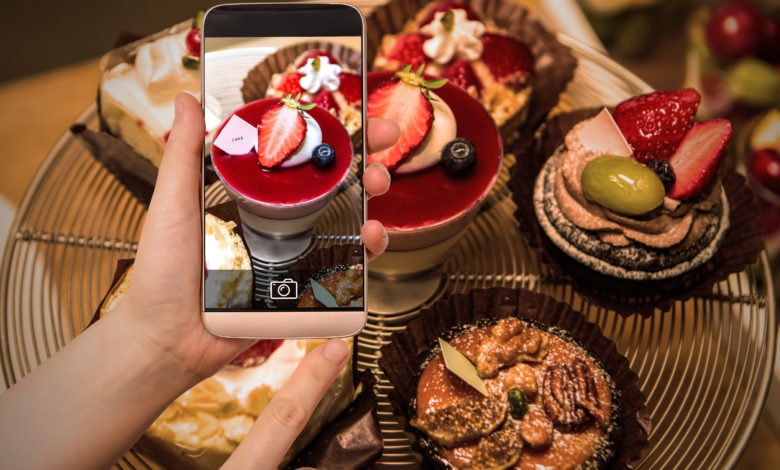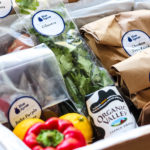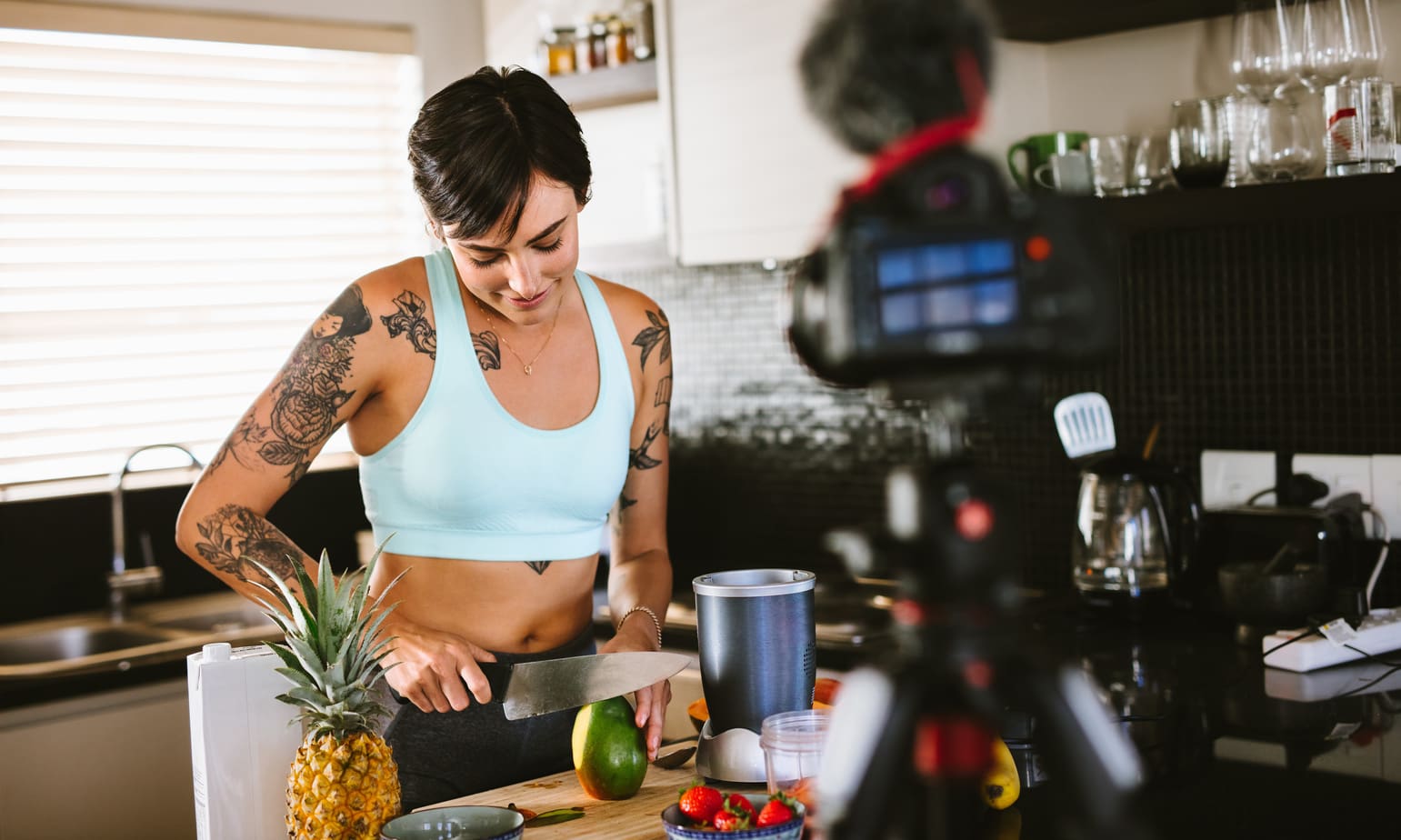Social Media and Food (Changing The Way We Eat?)
Social media and food- we all know it, we all love it, and we all photograph it. But how is social media changing the way we, as consumers, purchase food and make decisions about the way we eat?
Is Instagram responsible for your new gluten-free diet, or your choice to purchase a certain food or go to a certain restaurant?
In decades prior, we didn’t have access to the types of social media accounts we do now, especially food accounts that are highly specific and geared towards any and every type of food consumer.
Whether you’re interested in making more at-home baked goods, purchasing more organic groceries, or entertaining a new vegan plan, the way we look at social media accounts can have a large impact on the way we shop for and consume foods.
But how has this happened and how will these trends shape how we eat and make choices about our diets over time? And why are Facebook and Instagram food accounts so appealing to us in general that they motivate us to eat differently- beyond any advertisement for a specific diet or meal kit plan you see popping up on the feed itself?
We wanted to explore how social media is changing the way that we eat, and why are we so fascinated, and then motivated to eat differently as a result?
Is it lighting, editing, the person suggesting the food, or a sheer fascination with food related accounts in general?
Perhaps it’s a combination.
But it’s evolved into a “blender” of food, a myriad of digital trends, and human psychology we haven’t seen before.
Social Media and Food: Instagram Trends
One of the largest venues for sharing, creating, and interacting with food photography and content is Instagram. While we’ve seen a rise on all social media accounts for food-specific posts, trends, and recipes, Instagram definitely leads the pack in terms of the sheer volume of food related content.
It also tends to get incredibly specific. If you’re looking for a raw vegan account, gluten-free baked goods, recipes for your new low-carb plan, or to simply post new organic content and food photos, the odds are Instagram is the social media pick for most of us.
Even for those of us who don’t use any editing software or Photoshop tools, we’re enhancing our own home recipes and the foods we purchase and dine on at restaurants using filtering tools and sharing these photos with all of the relevant hashtags we can in an effort to get them to go viral, or at least to create “meaning” in the way we enjoy foods.
What we don’t often realize is how color and the use of light can be incredibly appealing to our minds, and in turn our stomachs, when it comes to food.
When studying a range of the most popular and trending Instagram food accounts, we can see how even a simple avocado, with the use of the right lighting and color enhancement techniques, can make our mouths start to water and our stomachs growl.
It stimulates our brains and if it’s promoting a certain brand, restaurant, or service (especially if done via a trending or influential account), fuels us to purchase this product or food. Foods we may not have otherwise. Some accounts can even shape new diet plans or create a desire to start a completely new regimen. Some of us may have even launched new Paleo plans because of Instagram accounts, or sampled new or exotic foods and cuisines for the first time after seeing stimulating images with calls to action.
Usually, we also have to trust and relate to the source. If we can trust and relate to the account user, whether it’s a friend or a trending food account with a large following base and quality content, we’re more inclined to buy and try new foods, recipes, plans, and restaurants.
This in turn has a huge impact on business and consumerism.
Now, restaurants are keenly aware that all of their dishes and even their locations (backdrops, lighting) will have to fit the aesthetic standards of potential social media shares.
If a restaurant or brand can make a dish or offering go “viral” on Instagram or promote it via a popular Instagram account with a large following base, they in turn become more profitable. But this is also shaping the way they serve. There has become a focus on presentation unlike anything before, in terms of color and serving and even the dishes garnish.
So we’ve seen Instagram shaping the way we purchase and eat, changing consumerism, and we’ve also seen it effecting the way restaurants and food chains present dishes in an effort to maximize “social presentation,” and hence feed their own bellies (or wallets) at night.
Social Media and Food: Specific Diets, Foods, Plans
One of the most interesting trends we see on social media with food on any channel, but typically Instagram, is the high degree of specificity involved in a lot of accounts that still perform very well with a lot of followers.
If you’re looking to join a new vegan, gluten-free, paleo-based, or even raw vegan community, it’s all available and easily accessible now using your phone.
We can view photos, tips, ideas, and all of those photos and videos that leave us wanting more- and we can pick and choose exactly what types of images and categories to select from.
A decade ago, we only ever really saw restaurants or large chains advertising their foods and services with the use of commercials, print ads, or online to try to market foods.
Now, we’ve seen such a turnaround in the way individuals are marketing (often without even trying), and with such specific plans. So if you’re interested in using a hashtag to search for a specific food, recipe, or new meal plan/diet, it’s online. If you’re looking to drool over raw vegan foods, it’s available.
And if you want photos of deep fried Oreos with lighting and colors that are perfect and direct you to local food festivals in your area, you can also search Instagram for your perfect venue.
Social Media and Food: Changing The Way We Eat & Dine?
It’s incredible to think about the impact social media has on the way we shop, dress, feel, and purchase. But it’s even more impressive- and a bit of a psychological phenomena- to see it changing the way we behave around food and the way we perform basic functions in life (i.e. eating).
The next time you check your feed and read about a new recipe for avocado toast with fried eggs that save on gluten, or see photos of colorful new Starbucks drinks dedicated to celebrities, a new raw vegan dish that can be prepared in under 30 minutes, or even rainbow bagels or grilled cheese, it’s interesting to wonder- why is this so fascinating to us and how is it changing our eating behaviors?
With a single click, we’re hooked on a new food or diet trend. And we’re inspired to behave, eat, and shop for foods based on changing digital trends and powerful images.
I know when I see a photo of a food on Instagram I’ve never tried before that seems to hold weight from an influential account without potentially holding too much physical weight later on (unless it’s one of those IG cheat days we all have), it’s meaningful and I’m more inclined to purchase that food.
We’re also likely more inclined to dine at restaurants with foods that have already been promoted by influential accounts, or simply restaurant accounts themselves that market using the best images.
Food may be a sensorial experience, but it often begins as a completely visual one and is now largely based on social media trends and evolutions.
Beverly joined MFS with a diverse breadth of experience in writing and digital marketing. Throughout the years of placing recipes on MFS, I’ve noticed an uptick in the number of “subscription boxes” for the cooking/food market. It was then that I decided to also include my own personal review of these subscriptions on MFS.






